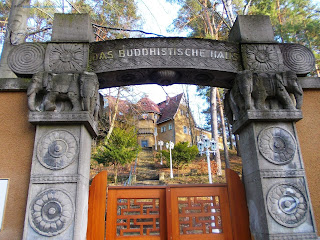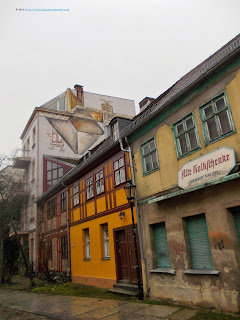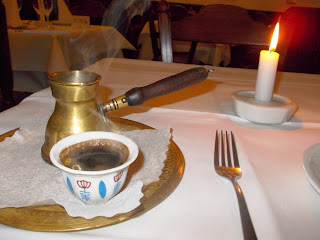There are always a lot of things to do at home when you travel intensively as I plan to do in the next days, but I couldn't refuse to follow a friend's suggestion for an evening at Circus, one day before a short trip to Luxembourg. To be honest, I am not such a big fan of European circus - but always fascinated by the beauty of its Chinese variant. I fell in love with the manège shows in my teenage years only, thanks to some beautiful paintings inspired by acrobats that I admired in the house of a relative. But as the chances for some family fun in the last days of 2013 were extremely limited, we took the advantage of the 8 Eur. family ticket and went to the Circus William.
Due to the special prices, only inspiration secured our places: I made a phone reservation early in the morning otherwise shortly before the opening of the show there were no more tickets left.
The show took place on a very extreme East side of the city, a place a never been too but reminded me every tram station of the ugly Communist areas. In the public, children, parents and grandparents of all ages and social backgrounds were translating into practice the fraternity between classes, ages and even ethnic backgrounds.
Temperatures are getting lower these days and I was a bit sceptical to spend some hours in a tent. However, the heating worked perfectly and during the entire show did not feel that only a cover abnd not a real wall separates me from the outside one digit cold.
Let's the show begin! I haven't been to a proper simple circus show for more than three years, when we've been to a relatively boring representation in Barcelona, almost the same time of the year. Now, I did not have time to get bored: each part lasted for around 1 hour with a break in-between for visiting the animals or taking pictures with big snakes, and each moment lasted maximum 10 minutes. Every moment was entertaining enough to keep you awake, even if you don't understand German properly. The acrobatic moment were intense, but relatively simple with an awesome closing show with acrobats running on a running wheel on the top of an ingenious machinery more than 20 meter high. Last but not least, we all were intrigued by the special magic of the lady who was able to change her show costume more than 8 times within seconds. Indeed, only magic can help a lady to change her outfits so fast!
The animal shows - with camels, horses, zebras, antelopes and the much praised white tigers (that like any artists, were not in a very good mood to perform on stage that evening) - were relatively dutiful. Amazing performance of the 2-leg walking horses though!
The clowns were fine, not extremely amusing, but not bothering or too vulgar either.
At the end of two hours of show, ending up with a hearth-breathing performance, we had exactly what we expected: fun, some suspense and a lot of entertainment. Plus a picture with the big snake. Sometimes, you don't need to much to be happy.

















































